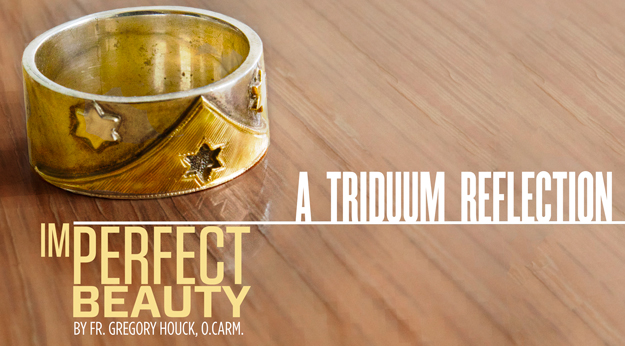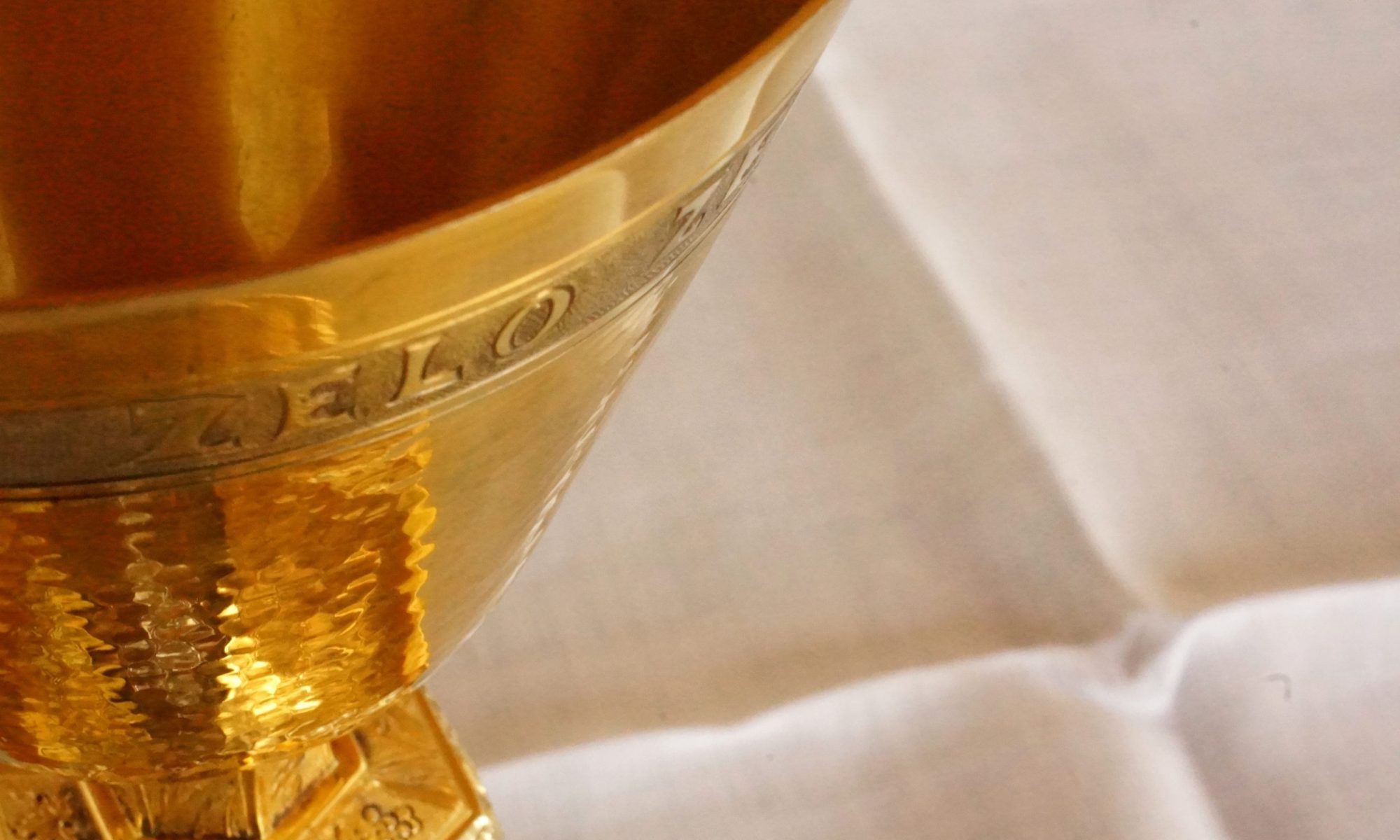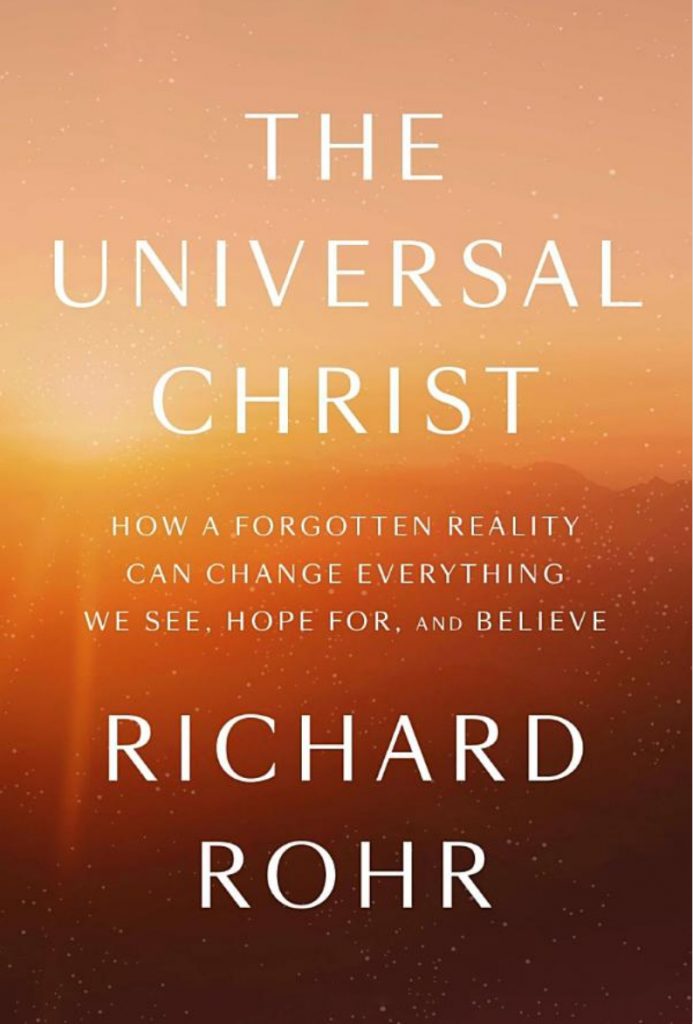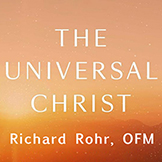
When I was still a seminarian, an older Carmelite, Father Bonaventure, visited us for a few days. During his visit I listened to his stories of life in the missions, in our schools, in our parishes and stories about his family and about his hobbies – and his battle with cancer. Just before leaving he handed me a large box filled with clergy shirts and some regular shirts, too. He said, “you look like my size and so consider this a ‘thank you’ for the kindness of listening to an old man tell his stories.” And then he took the ring off his finger and said, “this ring has been with me throughout my Carmelite life and I would rather it not be buried with me so I’m giving it to you.” I tried to refuse it but he insisted, and then left for home.
Later that day I examined the ring. It was ugly! Badly tarnished. Scratches galore. A big dent on the back. Dirt encrusted around the Carmelite shield design. And when I tried to put it on, it was too small and the dent dug into my skin. I decided that I should keep it since it was a gift, so I put it away and then soon forgot about it.
When I ran into it again, I was serving as an associate pastor in a Carmelite parish in New Jersey. The president of the parish council ran a jewelry store in town so I brought it into his store and asked if he could do anything to make it fit. He sized the ring and sized my finger and said that a small insert could be added. But then he added that it was a cheap ring and an identical new one would be easier to make than to resize this old one. But I said that this ring had some sentimental value and I’d prefer if he did something with it instead of making a new one.
Two weeks later he called to say the ring was ready. So I walked over to pick it up. He went to the back room and came out with a small box and handed it to me. I opened it and was completely surprised at what I saw. The ring was beautiful! The basic band was bright silver and the Carmelite shield logo was in gold. And everything caught the light and glistened. No grime. No tarnish. No dent. Clean. Bright. Beautiful. It was so super-nice now and such a complete surprise. Yes, the same scratch is there, but now barely noticeable. In fact, it is that scratch and all the dents, the tarnish — the history — that even makes this ring all the more beautiful. Beauty with history has to mean a lot more than beauty alone.
If God wanted us to be angels, God would’ve made us angels. Instead God made us humans. Being human must be important in God’s plan for me and in God’s plan for you. And I think this ring illustrates that. The jeweler could have made a brand new identical ring and it would be perfect — no scratches, no dents, no resizing. Yes, perfect. I sometimes think the angels are like that. They have no faults, no sins — they’re perfect. But the jeweler instead took the old ring and scrubbed out the grime, polished out the scratches, and hammered out the dents and made it beautiful. But it’s even more beautiful because of that grime, those scratches, and the dents. It’s even more beautiful because of has that history.
When the Father did all that for His Son — closing the whip marks, reknitting the marks from the thorns, drying up the flow from the nails — that is Resurrection! Jesus is beautiful in the Resurrection, and all the more beautiful because of the whipping, the thorns and the nails. The marks are still there, but no longer marks of pain and horror but marks of depth and meaning. Resurrection is all the more beautiful because of the Crucifixion. Easter is all the more beautiful because of Good Friday.
And it’s the same with us. Who hasn’t been scourged or beaten or even crucified in this life? We all have. Each one of us. But if this is born in love or chosen in love or suffered because of love, then God will do the same thing. God will close my whip marks, your whip marks. God will reknit my thorn scratches, your thorn scratches. God will dry up my flow of blood, your flow of blood. This is resurrection! My resurrection, and your resurrection, will be all the more beautiful because through the whips and thorns and nails, we still chose love. We chose the cross.
This is why, when we celebrate Easter we don’t only celebrate Jesus’ rising from the tomb. That’s not enough! We are also celebrating his Passion, and his Crucifixion. Now that’s enough! We celebrate Easter across three days — Holy Thursday, Good Friday and the Great Vigil of Easter. That is Easter. Easter is not Sunday; rather, Easter is Thursday-through-Sunday. And then we take that and celebrate for fifty more days.


